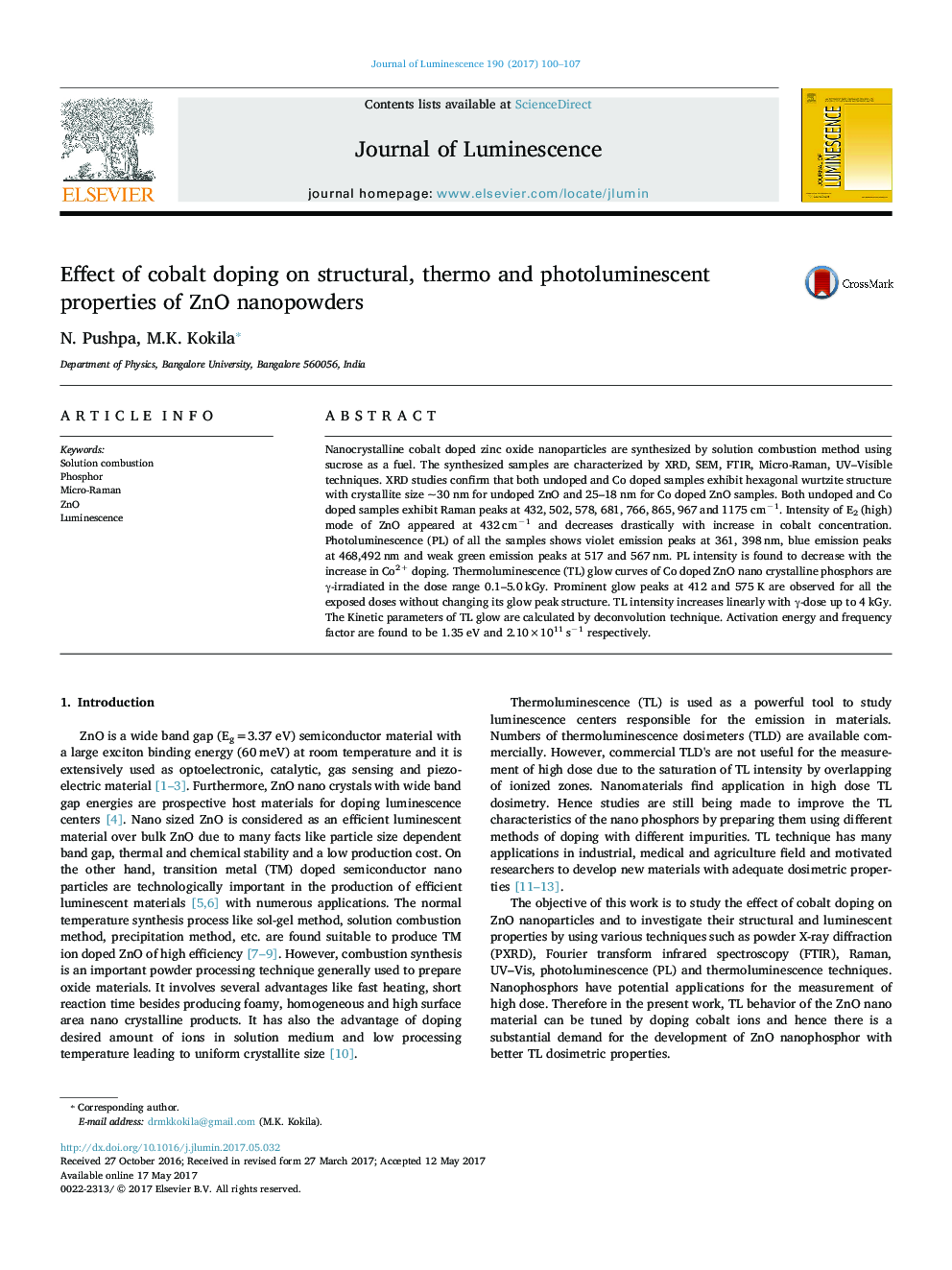| Article ID | Journal | Published Year | Pages | File Type |
|---|---|---|---|---|
| 5397511 | Journal of Luminescence | 2017 | 8 Pages |
Abstract
Nanocrystalline cobalt doped zinc oxide nanoparticles are synthesized by solution combustion method using sucrose as a fuel. The synthesized samples are characterized by XRD, SEM, FTIR, Micro-Raman, UV-Visible techniques. XRD studies confirm that both undoped and Co doped samples exhibit hexagonal wurtzite structure with crystallite size ~30 nm for undoped ZnO and 25-18 nm for Co doped ZnO samples. Both undoped and Co doped samples exhibit Raman peaks at 432, 502, 578, 681, 766, 865, 967 and 1175 cmâ1. Intensity of E2 (high) mode of ZnO appeared at 432 cmâ1 and decreases drastically with increase in cobalt concentration. Photoluminescence (PL) of all the samples shows violet emission peaks at 361, 398 nm, blue emission peaks at 468,492 nm and weak green emission peaks at 517 and 567 nm. PL intensity is found to decrease with the increase in Co2+ doping. Thermoluminescence (TL) glow curves of Co doped ZnO nano crystalline phosphors are γ-irradiated in the dose range 0.1-5.0 kGy. Prominent glow peaks at 412 and 575 K are observed for all the exposed doses without changing its glow peak structure. TL intensity increases linearly with γ-dose up to 4 kGy. The Kinetic parameters of TL glow are calculated by deconvolution technique. Activation energy and frequency factor are found to be 1.35 eV and 2.10Ã1011 sâ1 respectively.
Related Topics
Physical Sciences and Engineering
Chemistry
Physical and Theoretical Chemistry
Authors
N. Pushpa, M.K. Kokila,
